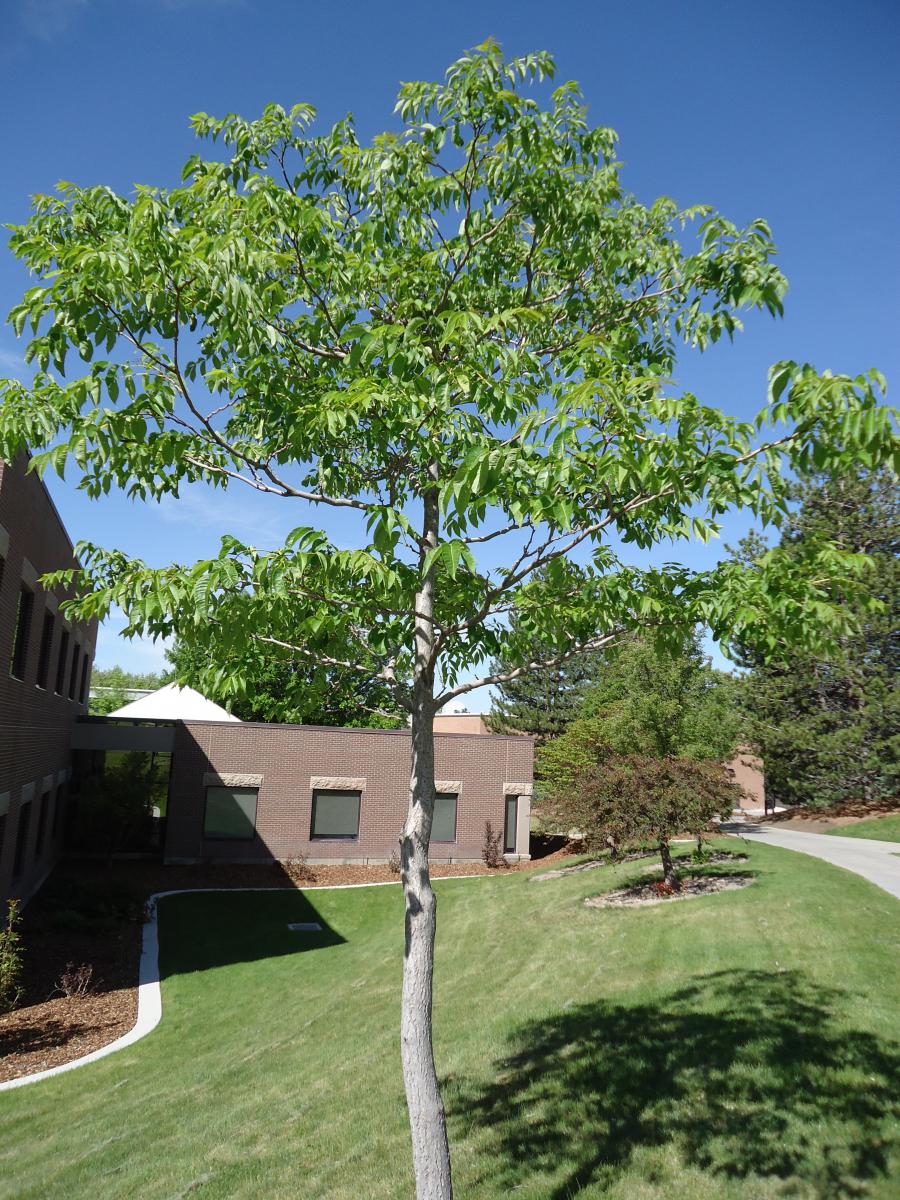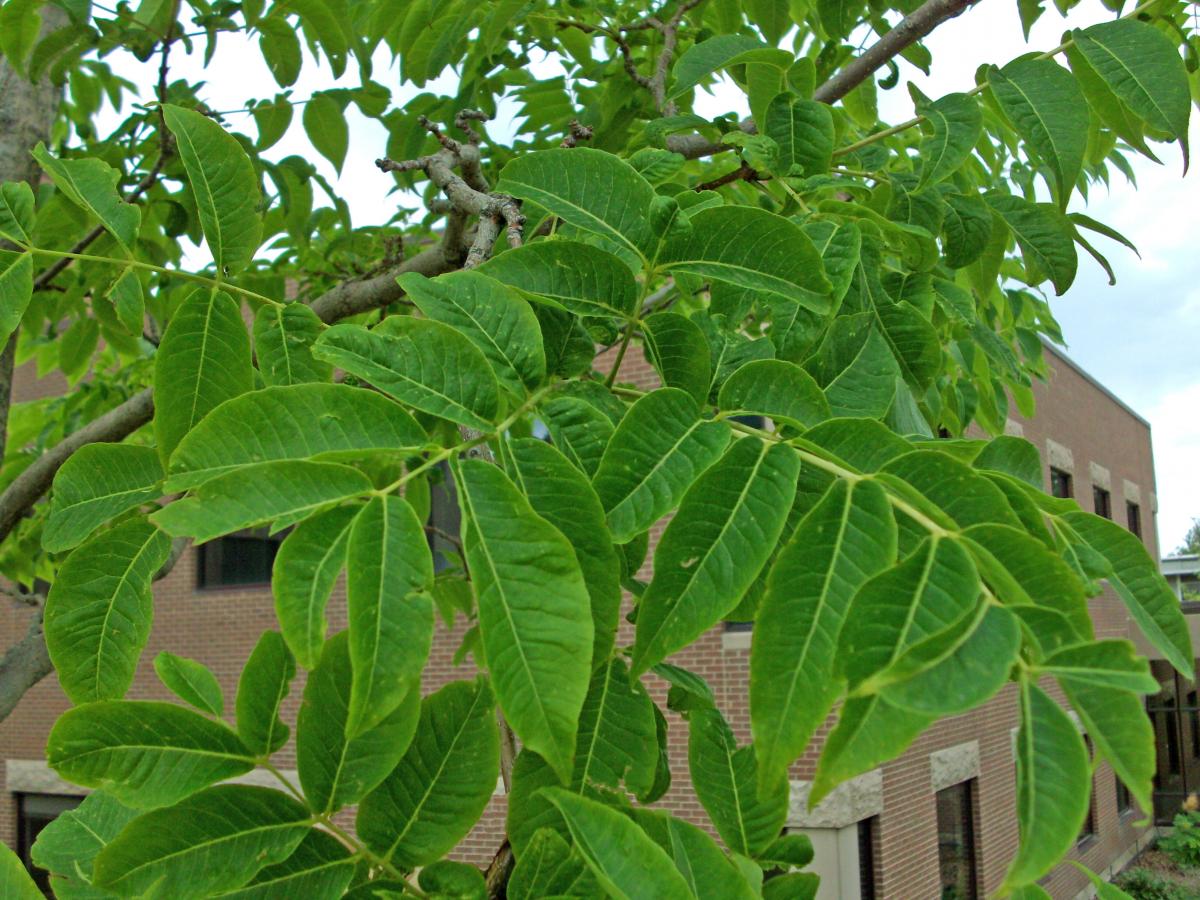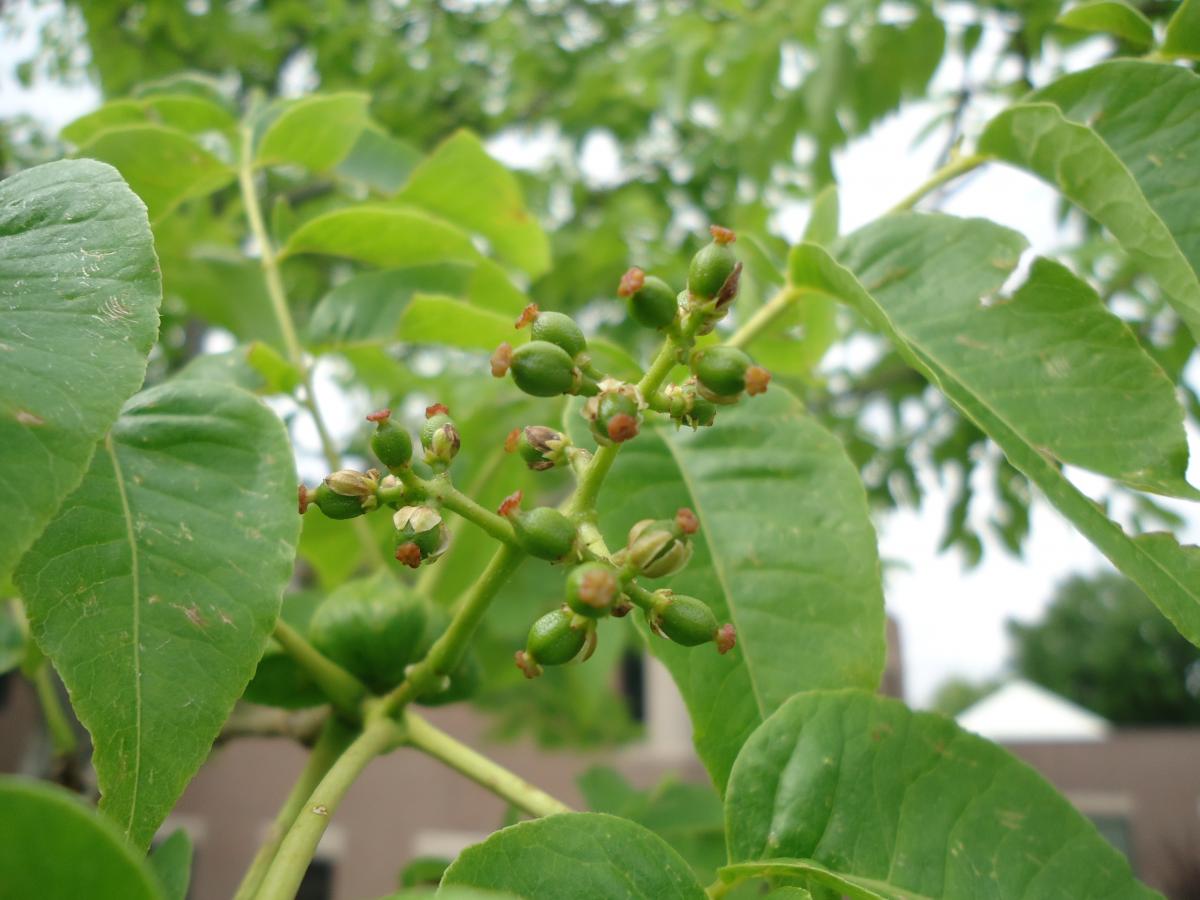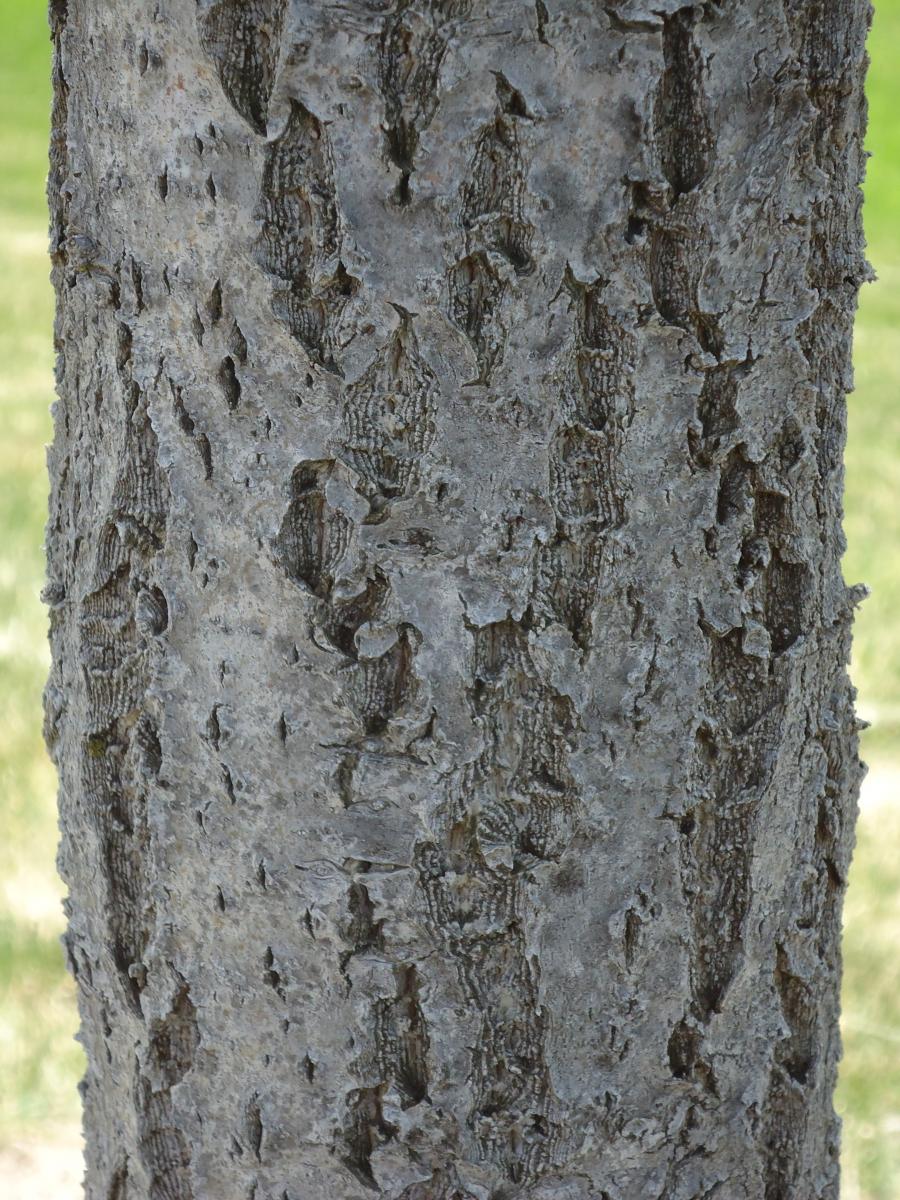Amur CorkTree




Phellodendron amurense
Leaves: Deciduous. The leaves are compound, 10 to 15 inches long and composed of 5 to 11 leaflets that are dark green in color, leathery and glossy. Leaflets are elliptical, 2½ to 4½ inches long, ½ as wide, and the leaves have a distinctive citrusy smell, sometimes likened to a disinfectant, turpentine, or skunk odor smell when crushed. Bright yellow fall color.
Bark/Twigs: The bark is smooth, light golden-brown or gray color on younger trees and gray-brown, ridged, and deeply furrowed in an interlacing pattern on mature trees. Both young and old trees have bark that is slightly spongy or corky to the touch and a distinctive bright neon yellow layer of inner bark.
Flowers/Fruit: Flowers are yellow-green and hang in small, clumped bunches. Late May to early June. Dioecious - male and female plants are separate. Female trees produce abundant clusters of round fruits (drupes) which are ¼ to ½ inch diameter, and have a strong odor when crushed. The fruits are bright green, turning black in late summer to fall, and may remain on the tree until early winter. Male trees do not produce fruit.
Mature size and shape: Large. 30 to 40 feet high x 30 feet wide. Broad spreading shape, with a short trunk. Mature trees have shelf-like branching.
General information/special features: Plant in full sun or part shade. Prefers moist, well-drained soils. Resistant to drought and insects, and can grow in a variety of soils, including alkaline sites. The wood of the tree is strong and rot resistant and is prized by some woodworkers. The bark has been prized for its use in traditional medicine in China, India and Japan. The inner yellow bark was used to make a special dye in ancient China and to make yellow paper for governmental and religious documents.
Landscape use and maintenance: Ornamental specimen tree. Average to fast growing rate. Average maintenance. Fruits can be messy. Plant male varieties to prevent mess. Prune in winter.
USDA Hardiness Zone: 3 to 7
Family/Origin: Rutaceae – Rue or Citrus. Northern China, Manchuria and Japan. It is indigenous to moist soils in the valley of the Amur River, which serves as the boundary between Siberia and China.
Campus Use: Rare. Only specimen. Can be found on the north side of LNCO (Bld 49).
